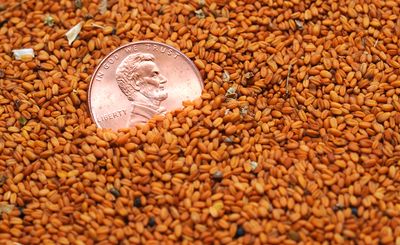Big plans for biodiesel crop faltering
High wheat prices, falling cost of fuel have cut incentive

BILLINGS – Ambitious plans to convert millions of acres of Northern Plains farmland to grow a biodiesel crop have stalled, as competition with traditional crops and other factors constrain a promising new agricultural industry.
In Montana – the center of the fledgling camelina industry – the number of acres devoted to the oilseed crop fell by more than half this year from the 22,500 acres planted in 2007, according to preliminary federal figures.
That’s far short of what companies had anticipated. And it marks a significant setback for a crop widely touted as an ideal source of plant oils needed to make alternative fuels.
Acreage for other states was not available, but agriculture industry representatives said the problems with the crop seen in Montana apply across the region.
“There were some big numbers being thrown around, but it just hasn’t come to fruition,” said John Hilton, deputy director of the National Agricultural Statistics Service field office in Helena.
Once prolific in Europe, where it was used for lamp oil, camelina was relatively unknown in the United States until a recent revival. It needs minimal water to grow and tolerates extreme cold weather – making it ideal for the arid Northern Plains.
Just a year ago, several companies announced plans to collectively produce more than 200 million gallons of biodiesel from camelina within three years. Reaching that goal would require several million acres devoted to the crop, industry representatives said.
However, with prices for wheat hitting record highs over the past year, many farmers balked at converting to the oilseed crop. About 5 million acres of wheat are planted each year in Montana.
Camelina supporters hope for a turnaround in 2009, as wheat prices drop and make the alternative crop more attractive. Yet with prices for diesel also falling, interest in the crop as a fuel source could suffer.
Politicians including U.S. Sen. John Tester and Gov. Brian Schweitzer – both Democrats from Montana – have promoted camelina as a way to reduce the country’s dependence on foreign oil.
Tester included a provision in the 2008 Farm Bill that made camelina eligible for the first time for federal crop insurance. The USDA has yet to implement such a program, but Tester said when it does, that will reassure farmers wary of changing their practices.
“We’ll have crop insurance for 2009,” he said. “Camelina is a new crop and farmers are traditionally pretty conservative folks. They don’t like to take a lot of risk.”
“Fundamentally, I think the industry is moving along at a pace that’s sustainable,” he added.
Don Panter is present of Sustainable Oils, a Seattle company that last year announced it planned to produce up to 100 million gallons of biodiesel annually by 2010. Those plans have now been pushed back by at least a year, but Panter said the goal remains unchanged.
“We could have spent a lot of time losing money, or we could be smart with our money,” he said of the delay.
Compounding camelina’s woes have been difficulties in finding a use for the millions of pounds of crushed seeds that are a byproduct of biodiesel. Also, a lack of seed-crushing facilities in Montana means the crop must be shipped out-of-state – raising production costs.